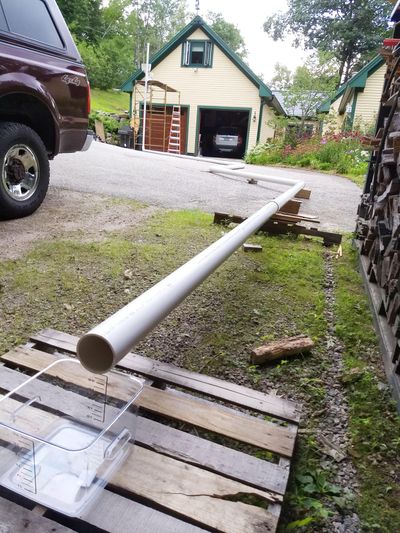Ask the Builder: Are flushable wipes flushable? I did a test

A few months ago, I wrote a column about how “flushable” wipes clog sewers. I received hundreds of responses from readers who shared their expensive horror stories about how flushable wipes had caused clogs in their homes.
But my favorite response was from a public relations firm representing the Responsible Flushing Alliance. They took umbrage with my column, sending an email to “follow up with you to consider an update to your story.”
I responded to them that I would gladly update my original story but would do it with a video, not words. You can read the letter they sent to me with all their counterclaims. Go here: go.askthebuilder.com/flushletter
I wanted you, and millions of others, to see in real-world conditions what name-brand flushable wipes look like after you flush them down your toilet. I wanted you to see what condition they were in just before they enter your septic tank or drop down into your city sewer system where you pass ownership of the problem to all the other taxpayers of your community.
My original column was inspired by a man who lived in South Carolina. His sewage ejection pump was ruined to the tune of more than $3,000 by “sewer and septic safe” flushable wipes.
I’ve been a master plumber since age 29 and have seen the insides of decades-old building drainpipes under concrete slabs. I know how easy it is for drain lines to get clogged with things other than toilet paper.
It’s important to realize I knew the Responsible Flushing Alliance would challenge my video findings. I asked for their input on the testing protocol methods so they couldn’t cry foul.
They did provide me with some documents outlining how they test, but at least one thing in their method does not meet any plumbing code I know. I ignored that part of their protocol and installed my drainpipe as is called for in the Uniform Plumbing Code.
I spent several days getting ready for the test. Before this, I had purchased a special crystal-clear container so you could see what came out of the drainpipe after the toilet flushed.
I erected my own pipe scaffolding with a platform 10 feet off the ground simulating a normal toilet height above a basement building drain. I went to the local home center to buy plumbing pipe and fittings. A new 1.6-gallons-per-flush toilet was used for the test.
Finally, I prepared a script to follow so the video would be as professional as possible.
I didn’t want to have any preconceived ideas about what the results might be, but my decades of experience told me that normal toilet paper would start to degrade quickly as the paper is jostled around by the turbulence of the flowing water inside the drain line.
Because flushable wipes are made similar to paper towels, I was fairly confident they’d not suffer too much from the flushing experience. My grocery store stocked three brands of flushable wipes. I purchased a package of each one for the test. I also bought a roll of single-ply toilet paper as we use a more expensive and durable two-ply paper in our home.
The results of the video test were remarkable. One of the flushable wipes did start to degrade slightly after tumbling through 70 feet of the drainpipe. This is an average length of piping that you might have at your home before your sewage makes it to your septic tank or the city sewer.
The other two flushable wipes suffered no visible damage in the test. You can see in the video that the water from the toilet was crystal clear in the container at the end of the pipe. The two flushable wipes appeared to be in the same condition as I dropped them into the toilet bowl.
The single-ply toilet paper turned to mush and broke apart into many small and medium-sized pieces. Surprisingly, the two-ply toilet paper didn’t fall apart too much. A large wad of it survived the journey through the piping.
I decided to flush a high-quality paper towel down the toilet. It survived the experience with no damage, and the water in the container at the end of the line also was crystal clear. Trust me: Never flush a paper towel down your toilet!
I urge you to watch my video of the test. This simple video might save you thousands of dollars. Share it with your friends, neighbors and co-workers, too. This is a rare opportunity to show exactly what happens beneath your concrete basement floor or under your lawn.
Finally, if you must use flushable wipes, please don’t flush them. Dispose of them in your home as you would a soiled baby’s diaper.
Subscribe to Carter’s free newsletter by visiting askthebuilder.com.